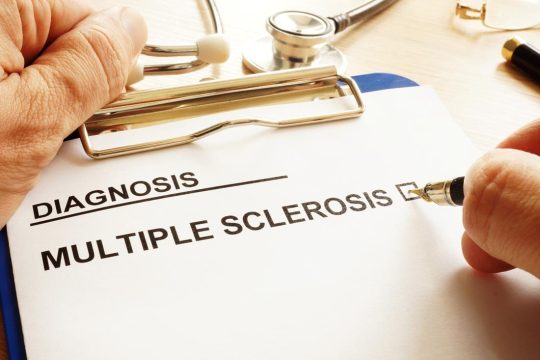Advertisment
ASH 2015: Ixazomib shows promise in variety of settings, according to early trial results
by Thomas R. Collins: Fresh off its approval in the U.S. in the relapsed/refractory setting of multiple myeloma, ixazomib continues to be examined in other patient pools, with results that are encouraging but still unfolding, according to data presented at the 57th Annual Meeting of the American Society of Haematology.
The drug is the first oral proteasome-inhibitor, which works by blocking the action of proteasomes, causing protein build-up in, then death of, cancer cells.
In Phase II data on 70 newly diagnosed patients who are not eligible for autologous stem cell transplantation because of age or co-morbidities, ixazomib plus 300 mg/m2 of cyclophosphamide and dexamethasone has yielded an overall response rate of 78% (complete response (CR) rate 10%). Those on the same regimen, except with a cyclophosphamide dose of 400 mg/m2 have shown on ORR of 65%, with a CR of 9%. Follow-up was about 15 months and patients are continuing to be followed. 1
Patients with the higher dose of cyclophosphamide have had a somewhat better progression-free survival rate, but they’ve also shown higher rates of adverse events — including peripheral neuropathy — and adverse-event-related discontinuations, leading investigators to suggest that the elderly patients might be more suitable for the lower dosage. 1
Meletios Dimopoulos, MD, Chair of the Department of Clinical Therapeutics at the University of Athens, who presented the findings, said results will likely continue to improve as the trial continues.
“With continuous induction therapy and maintenance therapy, we’re confident that these response rates will go up over time,” he said.
In another trial, ixazomib is being tried in combination with pomalidomide and dexamethasone in a particularly challenging population: patients refractory to lenalidomide and a proteasome-inhibitor.2 Ixazomib’s faster dissociation from the proteasome, leading to better tissue penetration and biological activity, make it an alternative worth exploring, said Peter Voorhees, MD, Associate Professor of Medicine specialzing in multiple myeloma at the University of North Carolina.
Patients must have tried at least two prior lines of therapy. A third of the patients were refractory to lenalidomide and a PI used as a combination, and the other two-thirds were refractory to lenalidomide then a PI in succession.
Investigators have found, according to Phase I results, that the three drugs can be used safely together, although hematologic toxicities are common and close monitoring and supportive care is needed, Dr. Voorhees said.
The combination of 4 mg of pomalidomide and 3 mg of ixazomib was well-tolerated, and enrollment onto 4 mg of pomalidomide and 4 mg of ixazomib is ongoing.2
Efficacy data is early – one patient has received 21 cycles of therapy, but most have received between 3 and 10 — but investigators have found an overall response rate of 55%. Of the 6 evaluable patients previously refractory to a lenalidomide/PI combination, half have responded, all with a partial response. Of the 14 refractory to sequential lenalidomide/PI treatment, 8 have responded — 7 with a partial response, 1 with a very good partial response.2
About half of the patients with high-risk cytogenetics have responded.
“We did see durable responses as well,” Dr. Voorhees said. “The caveat here is this is a very select patient population.”
In a Phase II trial — led by investigators with M.D. Anderson Cancer Center — with ixazomib with lenalidomide used as maintenance therapy after autologous stem cell transplant, the estimated 2-year progression-free survival is 83%.3
Patients were newly diagnosed with multiple myeloma and underwent transplant within 12 months of starting on induction therapy.
Investigators found the combination was well-tolerated, with minimal grade 3 and 4 toxicity and adverse events historically seen with lenalidomide alone.3
“Data supports a randomized phase III study,” investigators wrote.
References
- Dimopoulos M, Grosicki S, Jedrzejczak W, et al. Randomized Phase 2 Study of the All-Oral Combination of Investigational Proteasome Inhibitor (PI) Ixazomib Plus Cyclophosphamide and Low-Dose Dexamethasone (ICd) in Patients (Pts) with Newly Diagnosed Multiple Myeloma (NDMM) Who Are Transplant-Ineligible (NCT02046070). Presented at the 57th Annual Meeting of the American Society of Hematology. 2015 Dec 5-8. Orlando FL. Abstract 26.
- Voorhees P, Mulkey F, Hassoun H, et al. Alliance A061202. a Phase I/II Study of Pomalidomide, Dexamethasone and Ixazomib Versus Pomalidomide and Dexamethasone for Patients with Multiple Myeloma Refractory to Lenalidomide and Proteasome Inhibitor Based Therapy: Phase I Results. Presented at the 57th Annual Meeting of the American Society of Hematology. 2015 Dec 5-8. Orlando FL. Abstract 375.
- Shah J, Feng L, Weber D, et al. Phase II Study of the Combination of Ixazomib with Lenalidomide As Maintenance Therapy Following Autologous Stem Cell Transplant in Patients with Multiple Myeloma. Presented at the 57th Annual Meeting of the American Society of Hematology. 2015 Dec 5-8. Orlando FL. Abstract 3155.





